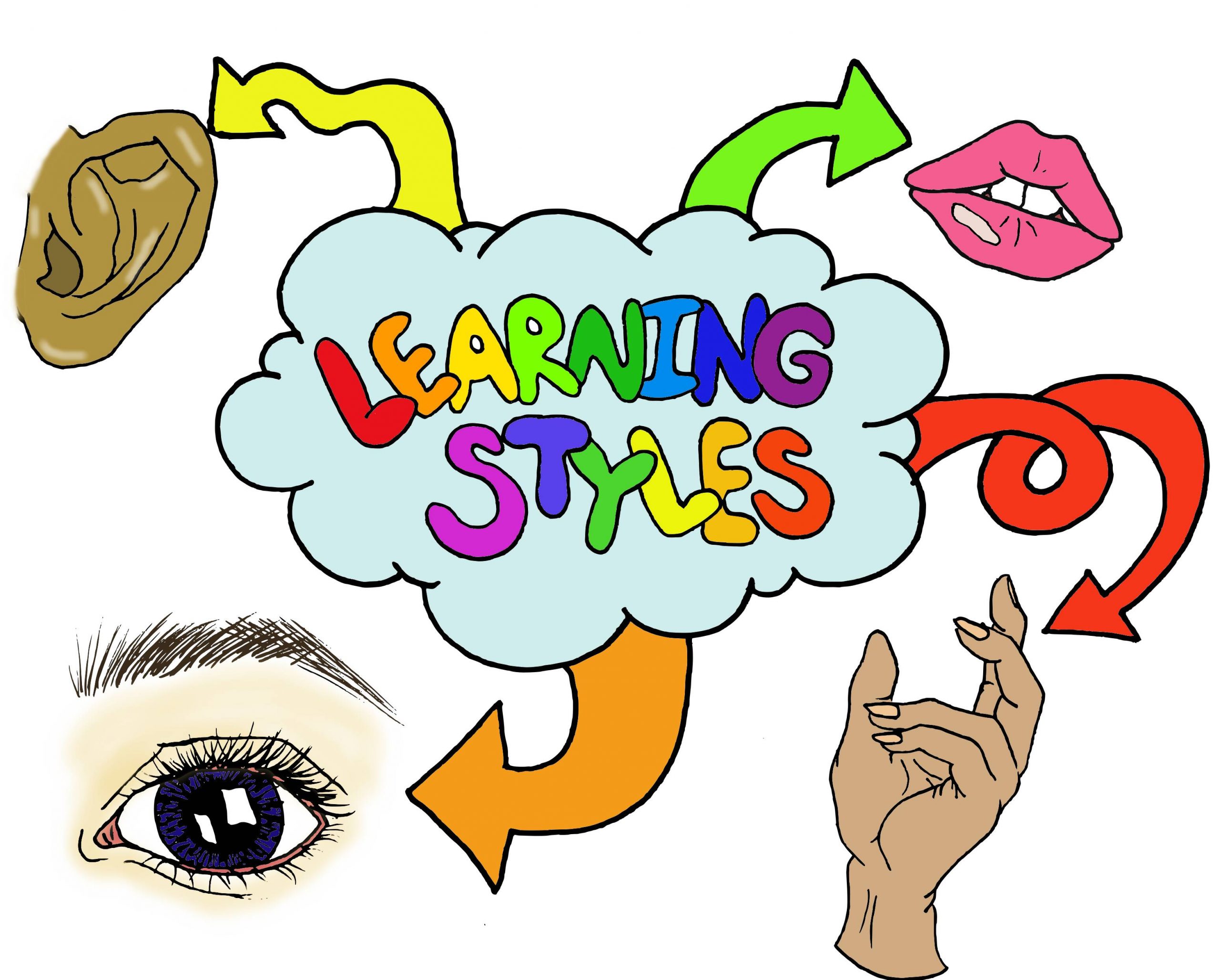12 Learning Preferences
Over the course of your program, you will use a variety of learning styles. It is useful to think about your preferences for certain learning styles, but also be open to all learning styles so that you can become a better reader and better writer.
Do you prefer reading text, looking at images, listening to a lecture, and/or engaging in an activity? Most people have one or two styles of learning that they prefer and help them make sense of new information. Sometimes your learning style is influenced by what you are learning. You will most likely draw upon many learning styles during your studies, but it is important to consider how you best learn and think about how you can apply this to read and write efficiently and effectively. See Figure 2.2 for a visual depiction of common learning styles.

Figure 2.2: Learning styles
Figuring out your learning styles
To figure out what learning styles you prefer, think about how you best learn something in your day-to-day life. For example, how did you first learn to drive a car? If you don’t have your license yet, imagine learning to drive a car. What might best work for you? See Table 2.3 to help you identify your learning styles and how this relates to your nursing education.
Table 2.3: Types of learner in the context of nursing
|
Type of learner |
Relation to nursing |
|---|---|
|
You might be a visual learner if…you begin by reading the driver’s handbook so you can figure out the rules of the road, paying attention to the images so that you know what all of the road signs mean. Do you think this is how you would best learn? |
If you are a visual learner, you should refer to or create visual formats while you are reading. During your nursing courses, you may want to draw tables, images, and diagrams as you study. You might also engage in notetaking in visual ways, such as highlighting key points and circling and/or underlining words. In the laboratory setting, you will most likely learn best when observing demonstrations by your instructor or observing a nursing skill being performed (such as how to give a medication to a client). |
|
You might be a verbal learner if…you read the whole book (might even read it out loud) and then ask questions and engage in discussion with a person about how to drive like an expert. Does this capture how you learn best? |
As a verbal learner, you will probably start learning by reading and notetaking. However, you will really advance your learning by engaging in discussion with your peers and your instructors in nursing lectures and labs. This kind of discussion allows you to verbally process and make sense of the information. Therefore, you might benefit from participating in study groups. |
|
You might be an auditory learner if…you listen to podcasts about how to drive or ask your parents (or someone else who is a good driver) to explain the rules of the road and how to work a car. Of course, don’t ask your parents if they are not good drivers! Is this how you best learn? |
You will want to take advantage of attending all of your class lectures because as an auditory learner, you learn best by listening. It is always more effective to do your reading first, and then use lectures to further make sense of and understand the key learning concepts. You will also have some opportunities (albeit limited) to listen to nursing books. Usually, this happens in a course where books or online modules are accessed online and have built-in audio or video components. Another example is listening to podcasts. |
|
You might be a kinesthetic learner if…you get inside the car and try to figure out what the buttons and gadgets mean/do and if you start by driving in a parking lot with an expert beside you. Does this sound like the way you best learn? |
As a kinesthetic learner, you will probably love courses that have lab components and clinical placements because you will have the opportunity to engage in the physical practice of skills, such as handwashing, bed-making, taking vital signs, etc. Kinesthetic learners tend to learn best through hands-on practice as opposed to sitting and listening in a lecture. As you are reading, think about ways to keep your hands moving: highlighting key information, taking notes, and designing your own study aids including key nursing tips or flashcards related to specific activities. For example, in year two, you might want to create medication cards identifying the therapeutic use of medications and adverse effects. |
Activities: Check Your Understanding

